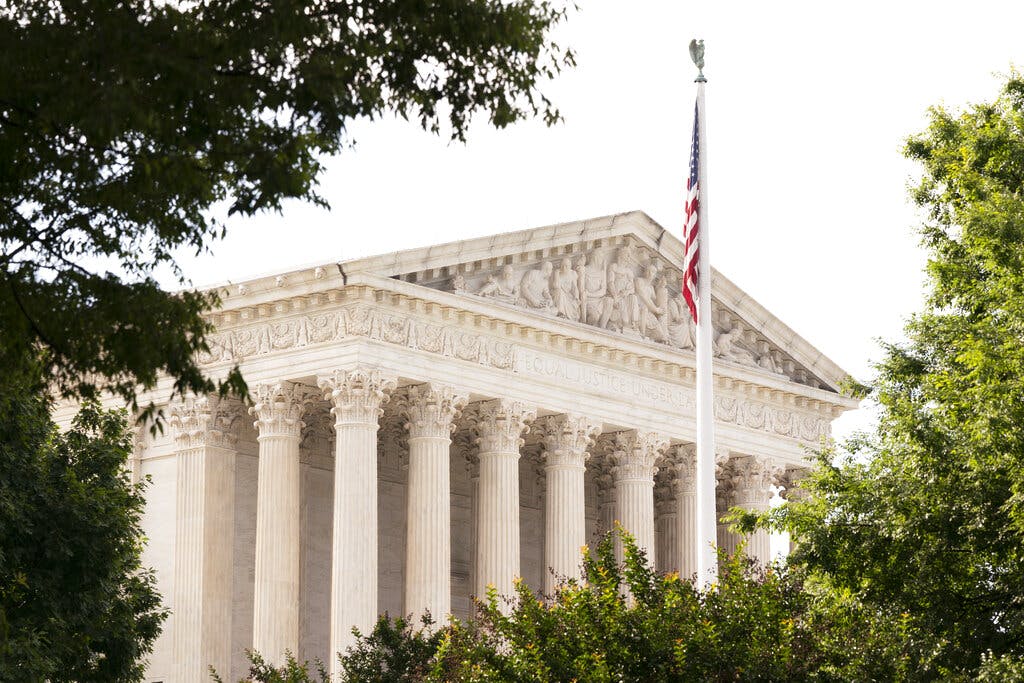Supreme Court Hears Case That Could Reshape American Elections
Constitutional fireworks flare during the course of three hours of oral arguments.

The future of elections nationwide will be decided in the chambers of Supreme Court justices after a morning of oral arguments over a core constitutional question: whether state courts have the authority to review how state legislatures run their elections.
Oral arguments disclosed a divided court on the question, with the liberal justices skeptical of the argument that the Framers intended for state legislature to reign supreme with little oversight. Justice Amy Coney Barrett’s line of questioning suggested she could be a swing vote, and Chief Justice Robers seemed interested in a compromise position.
The case, Moore v. Harper, arrives at the court from North Carolina, where the state’s supreme court struck down the election maps passed by the Republican-controlled general assembly as illegally gerrymandered. The court drew its own maps instead, and the justices granted emergency appeal.
The precise contours of electoral maps are not appealable to the Supreme Court, which in a 2019 decision, Rucho v. Common Cause, took itself out of the gerrymander game. However, North Carolina voters pointed to a “free elections clause” in their state’s constitution, and the jurists agreed that the gerrymandered map gave a “greater voice” to some voters than others.
Republican legislators challenged the court’s jurisdiction by citing the Constitution’s Elections Clause, which assigns the “Times, Places and Manner of holding Elections for Senators and Representatives” to the “Legislature thereof.” Federal courts retain the ability to review for violations of federal and constitutional law, a durable albeit limited purview.
The GOP lawmakers see in this mandate the basis of what has come to be known as the “independent state legislature theory,” which holds that the assignment of election procedures to the “Legislature” is absolute, excepting only congressional intervention.
In Arizona State Legislature v. Arizona Independent Redistricting Committee, from 2015, the high court declined to read “Legislature” narrowly, as referring just to the state house of representatives. Instead, it refers to the “power that makes laws,” which could include the process of judicial review and state constitutions.
The court’s conservative wing has intermittently displayed interest in the independent legislature theory, intrigued by the national parchment’s exclusive grant of the election portfolio to state representatives, even to the extent that the handling of an election runs afoul of state laws and constitutions.
The Tar Heel Republicans were represented by a former solicitor general under President Obama, Donald Verrilli. The Scotus veteran argued that the Constitution “does not leave the states free to limit the legislature’s constitutionally vested power,” and thus the supervision of state courts is misplaced.
Taking the other side of the question was another alum of the Obama administration, Neal Katyal, a former deputy solicitor general. No stranger to the high court himself, Mr. Katyal argued that a reading that saw state legislatures as essentially autonomous would create a “blast radius” that would upend elections in all 50 states.
According to Mr. Katyal, the independent state legislature theory has been unknown in the “232 years” that the Constitution has held sway. His closing argument suggested that should the case turn against his position, equal protection, due process, and a host of other constitutional principles would be at risk.
A lighter moment transpired when Justice Clarence Thomas noted that he had spent “30 years waiting” to ask Mr. Katyal a question, an acknowledgment of his own taciturn mien on the bench. For his part, Mr. Katyal noted that he had been “waiting” to argue this case before Justice Thomas for decades, because it “goes to exactly how you interpret the Constitution, with history.”

